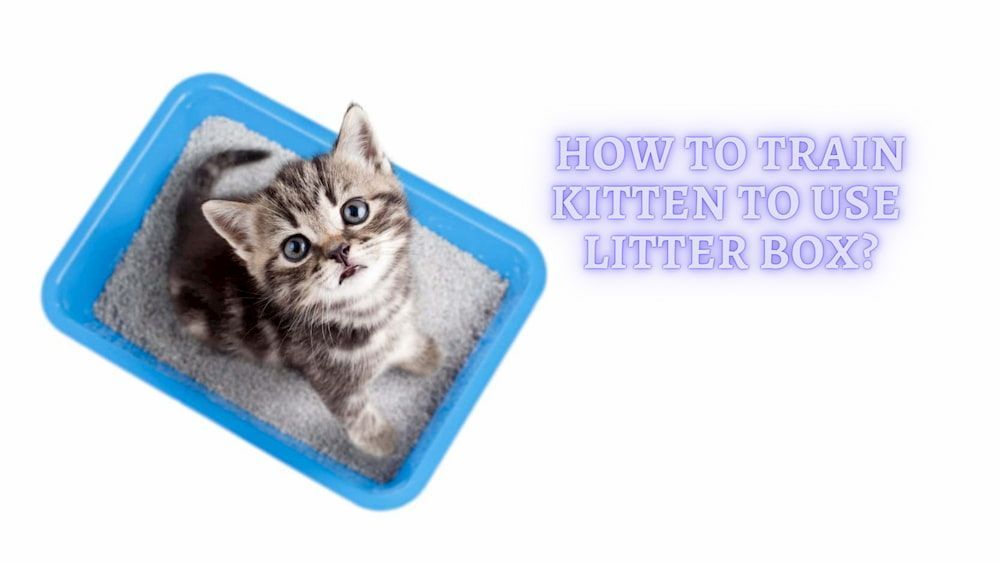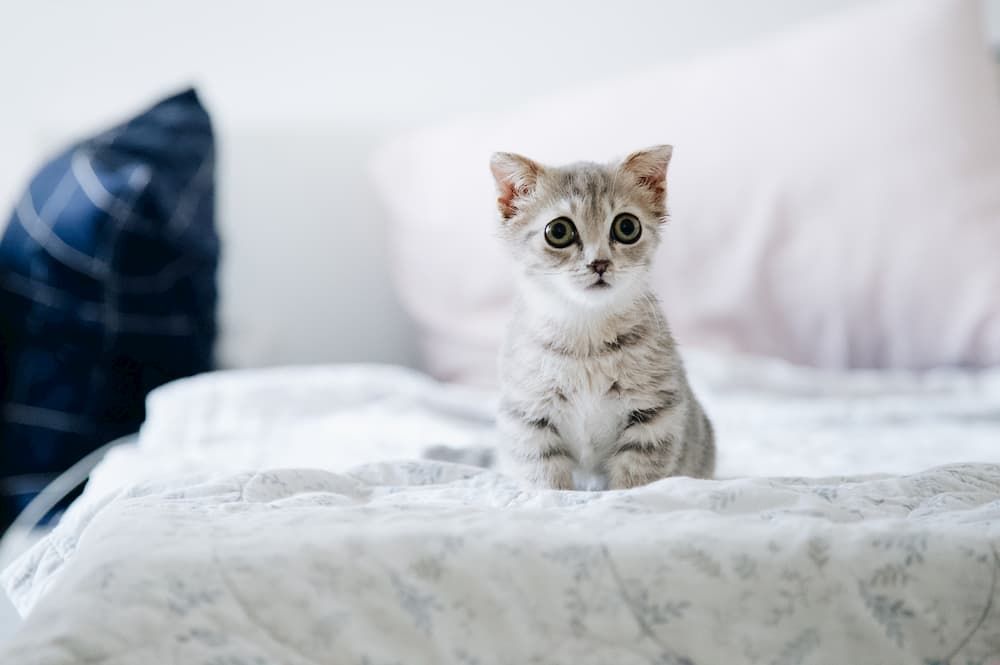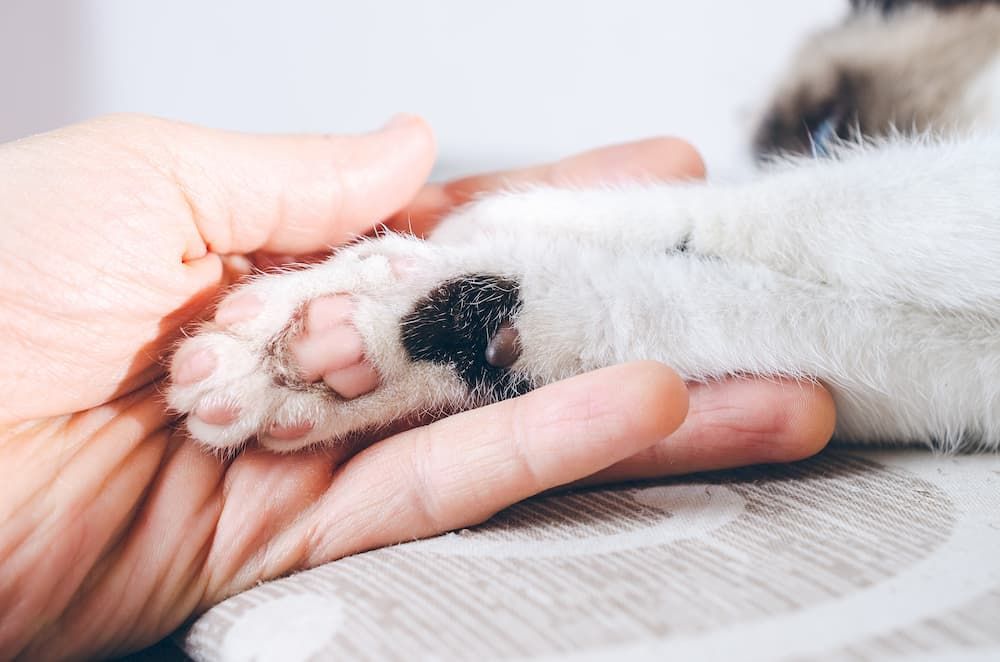How to Teach a Kitten to Use a Litter Box
Written by:
Author: Alina Andreeva
Alina A. is a professional writer, editor, and pet-lover. She has published over 50 articles on how to care for pets properly. Alina has been writing articles for 3 years, so she has considerable experience in this niche. Her natural curiosity helps her to expand her knowledge and learn new pet care life hacks, which will make your life much easier.
View all 79 articlesLearn about our editorial process and veterinary review board.
Reviewed by:
Veterinary review
by Dr. Chyrle Bonk
Dr. Chyrle Bonk is an associate veterinarian since 2010 and was a volunteer for Clearwater County Youth 4H. Dr. Bonk contributed to various animal and veterinary related websites and magazines as a way to help keep animals across the globe safe and healthy. When Chyrle not working she spends her time with her own furry crew of dogs, cats, and horses.
View all 10 articlesLearn about our veterinary review board
Viewed: 215
Updated on: 02/14/2023
If you just brought home a new cat, the first question that may come to mind is how to teach your fur baby to do his business in a litter box. Usually, it is not a very complicated affair. The majority of kittens learn from their mums how to use a litter box and know how to meet this challenge in their new homes. Even those cats who have not seen any litter box earlier are helped by an instinct to hide the evidence after going potty or doing number two. However, if your new feline companion needs some help, the following steps should make the whole business much easier for both of you.
READ MORE: Best Cat Litter Boxes
Choosing a Litter Box
If you want to litter train your new kitten as quickly as possible, choose a secluded place without drafts and prying eyes. For felines, privacy while going potty is essential, which is why they prefer pet houses to open trays. Never close off the room with your cat’s toilet, and free access is the key to quick and easy litter box training.
Litter trays should be made of non-electrifying plastic, easy to clean and be the right size for your pet.
- Litter trays. Uncovered toilets are easy to clean and consume a manageable amount of space. The open-top allows your fur babies to see each other and decide when it is a good time for them to go potty. But you should know that odors can be more noticeable due to the open-air design. Curious dogs or children are another cause for concern, as there are no obstacles to keep them out.
- Pet houses. Covered toilets are great for reducing odors. You may find that you need to do more cleaning because covers concentrate odors inside. To avoid this, look for a pet house with built-in ventilation. Also, they offer more privacy. To see whether your cat likes it, allow him to test it to ensure your sweetheart feels comfortable. Most felines love the privacy a condo provides, but some may still fear confined spaces.
- Automatic self-cleaning litter boxes. If you are a busy cat parent, you can save on cleaning time by using an automatic self-cleaning toilet. However, a robotic toilet can be pretty noisy. Some felines may be jumpy, while others won’t pay attention to it. If you have multiple cats, you can provide several litter boxes and let your feline companions choose between them.
If you have multiple cats, you should have one litter box per kitty plus an additional one. If your cat is the only pet in your home, you should still have two toilets.[1] That gives them the opportunity to choose which one they like best, especially if one is dirty.
Usually, felines prefer litter that most resembles sand or garden soil. They like doing their business in fine-textured and non-scented litter. Use as little as possible and frequently change to reduce odor and increase cleanliness. If you decide to change the type of litter, do it gradually by mixing it with the old litter in increasing amounts throughout a couple of weeks until the new litter has completely replaced the old.
READ MORE: Things to Know When Raising a Kitten
READ MORE: Where to Put a Cat Litter Box?
Training Steps
Before you take your new fluffy friend home, you need to prepare the toilet area. It is generally recommended to place new cats in a “transition room” that is comfy, safe, and isolated from other parts of the house. It can also really help your fur baby to get used to a toilet.
Put bowls on one side of the room and set up a litter tray or a pet house as far away from food as possible. Keep your cute bundle of fur in this room for the first few days or even weeks until he is comfortable in the surroundings. After you allow the kitten to explore other parts of your house, it is better to bring him back to this room when you are away from home.
Immediately after the kitten drinks or eats, put him in the toilet every time. If your cat seems confused, try scratching the litter to show him what to do. If you see your feline companion sniffing or scratching the ground, put him in the toilet.
If your new cat is doing his business in the room and not in the designated area, carefully place him in the litter tray. [6] Do not punish the kitten for potty accidents outside the toilet. You will just make him associate the toilet with negative things and deter your fluff ball from using it.
If your feline companion uses the toilet, praise him by giving a treat or with petting. First, let your new cat explore the designated area and get out of the toilet on his own. Don’t clean it right away; let the odor remain as a reminder to your fluff ball.[2][3][4]
Keeping the Litter Box Clean
Felines are extremely clean creatures. Sometimes, they avoid litter boxes that are not scooped often enough. Clean the litter tray or pet house at least once a day. Wash it and change the litter every week. Do not use disinfectants with a strong scent when cleaning the toilet. You should clean any accidents with an enzymatic cleaner formulated for pet stains, including feline urine. Ordinary cleaning products can mask the scent so that we cannot smell it, but with a cat’s excellent sense of smell, it may still be noticeable and may actually attract the cat to the area for continued use.[5]
READ MORE: Cat Doesn’t Cover Poop
The Bottom Line
Now that you are armed with the knowledge of how to litter train your new fur baby, you are on the path to a harmonious and happy relationship with your new fluffy companion. After you have consulted your vet and ruled out any health problems, and your cat is still not comfortable with the toilet, you may need to confine your kitty to a small area with the box like a bathroom until he gets used to it.
Article Sources:
- Litter Box Training | Longmont Humane Society. longmonthumane.org/.
- How to Litter Train a Kitten. 25 Oct. 2017, whiskas.co.uk/kitten/care/litter-tray-training.
- “How Do I Litter-Train My Cat?” RSPCA Australia, 6 Aug. 2019, kb.rspca.org.au/knowledge-base/how-do-i-litter-train-my-cat/.
- “Litter Box Training.” RSPCA Pet Insurance, rspcapetinsurance.org.au/pet-care/pet-training/litter-box-training.
- “Training Kittens.” Purina, purina.com.au/en/kittens/exercising/
- “Why Is My Cat Peeing Outside of the Litter Box? – We’re All About Cats.” We’re All About Cats, 9 Nov. 2020, allaboutcats.com/cat-peeing-outside-litter-box
 Kitten Care When to Switch from Kitten to Cat Food: Vet Advice on Switching on Adult Cat Food
Kitten Care When to Switch from Kitten to Cat Food: Vet Advice on Switching on Adult Cat Food - 315
- 0
 Kitten Care How To Get Rid Of Fleas On Kittens? Ways to Treat and Prevent Kitten Fleas
Kitten Care How To Get Rid Of Fleas On Kittens? Ways to Treat and Prevent Kitten Fleas - 124
- 0
 Cat Veterinary Tips Kittens First Shots: When do Kittens get their First Shots?
Cat Veterinary Tips Kittens First Shots: When do Kittens get their First Shots? - 500
- 0
 Cat Care Why Does My Cat Attack My Legs? 10 Reasons Why and What To Do About It (Vet-Approved Advice)
Cat Care Why Does My Cat Attack My Legs? 10 Reasons Why and What To Do About It (Vet-Approved Advice) - 45566
- 21
 Cat Veterinary Tips Cat Stomach Gurgling: Vet Advice on Why is Your Cat Stomach Gurgling?
Cat Veterinary Tips Cat Stomach Gurgling: Vet Advice on Why is Your Cat Stomach Gurgling? - 35340
- 4
 Cat Veterinary Tips My Cat Lost its Voice: Can Cats get Laryngitis? (Vet Advice)
Cat Veterinary Tips My Cat Lost its Voice: Can Cats get Laryngitis? (Vet Advice) - 23247
- 13






















